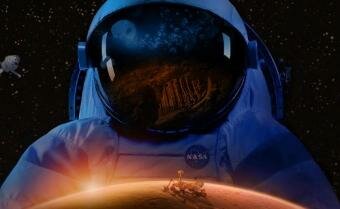A team of mathematical experts have said that 1729, which is also known as the Ramanujan-Hardy number, is linked to aspects of string theory and...

American space agency since long has been preparing a manned mission to the Red planet to set human colonies on the planet. Now the space agency has shared its comprehensive plans about how it will launch the deep space missions to the Red Planet.
NASA has unveiled its plans to launch future space mission to mars. The agency aims to send a manned spacecraft on Mars in the 2030s. The agency has been working on this three-stage path to the Red Planet for some time, and the space agency has released its basic plan on the mission in a recent report.
In the latest report, NASA’s Journey to Mars: Pioneering Next Steps in Space Exploration, the space agency has detailed three primary thresholds that it expects they could encounter during its planned journey to Mars.
The agency said that each threshold showcases increasing levels of difficulty as humans travel farther from Earth. Charles Bolden, NASA administrator, said in a statement that the space agency has reached the closest it has ever been to deploying American astronauts to the red planet.
The release of their recent report on their journey to Mars provides deep details on how they will put together all of their work in order to achieve the goal, he said.
He added that he is looking forward to discuss e outline of their plan with Congress members, as well as with NASA's commercial and international partners who will take part in the International Astronautical Congress scheduled for next week.
The NASA plan includes conducting research onboard the International Space Station (ISS). Agency scientists will carry out tests on technologies and will also study the advancement of human performance and health using the microgravity laboratory on the ISS.









